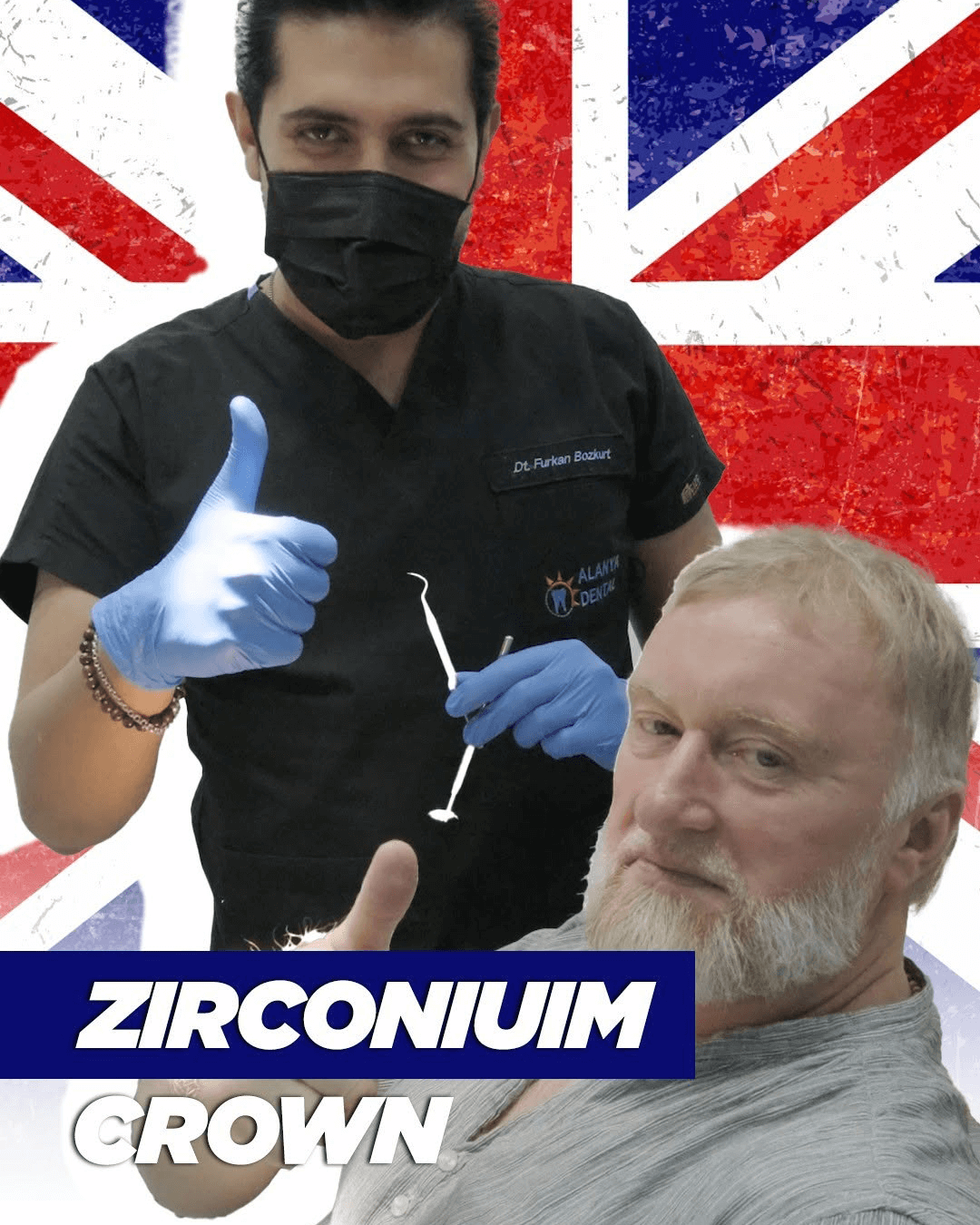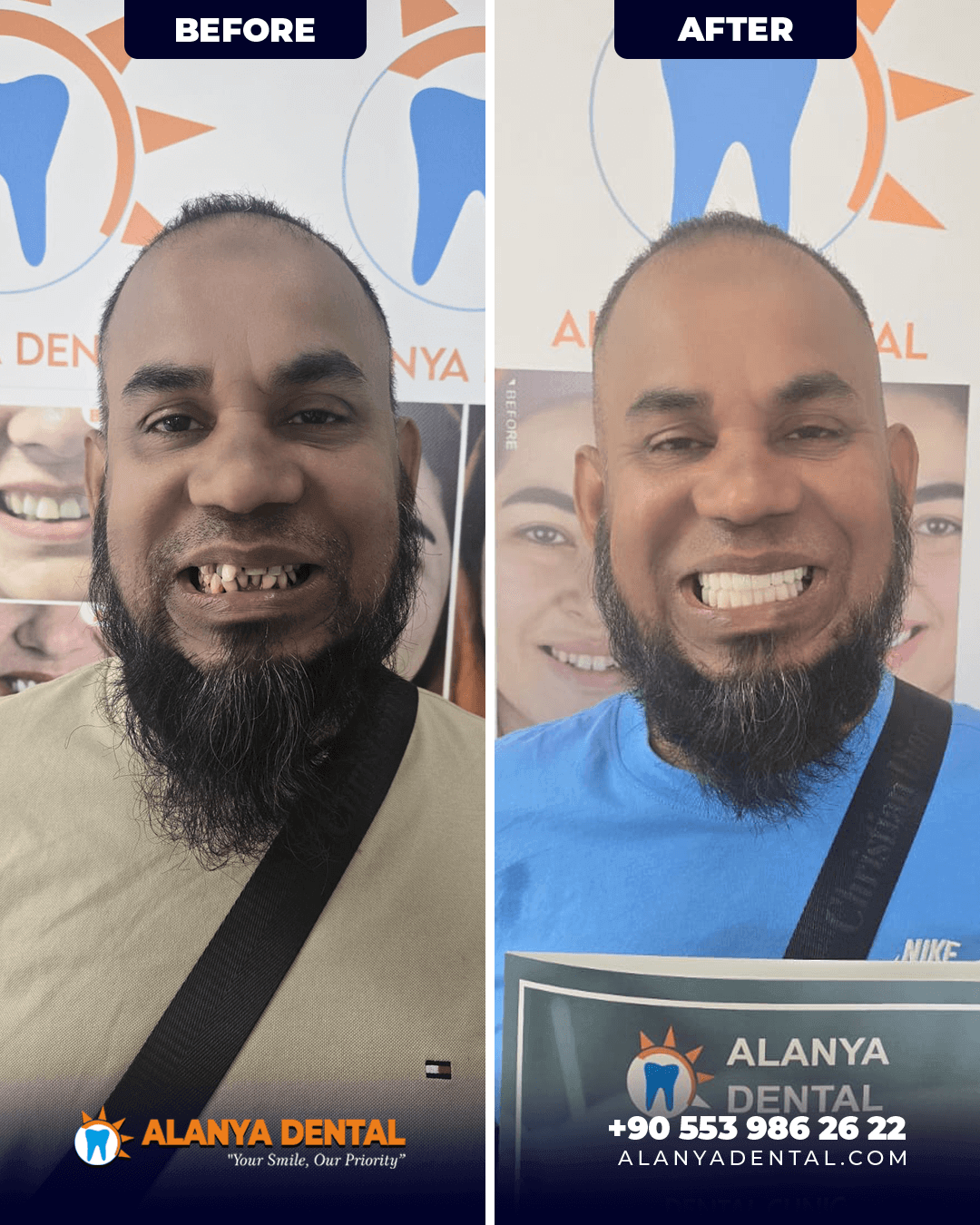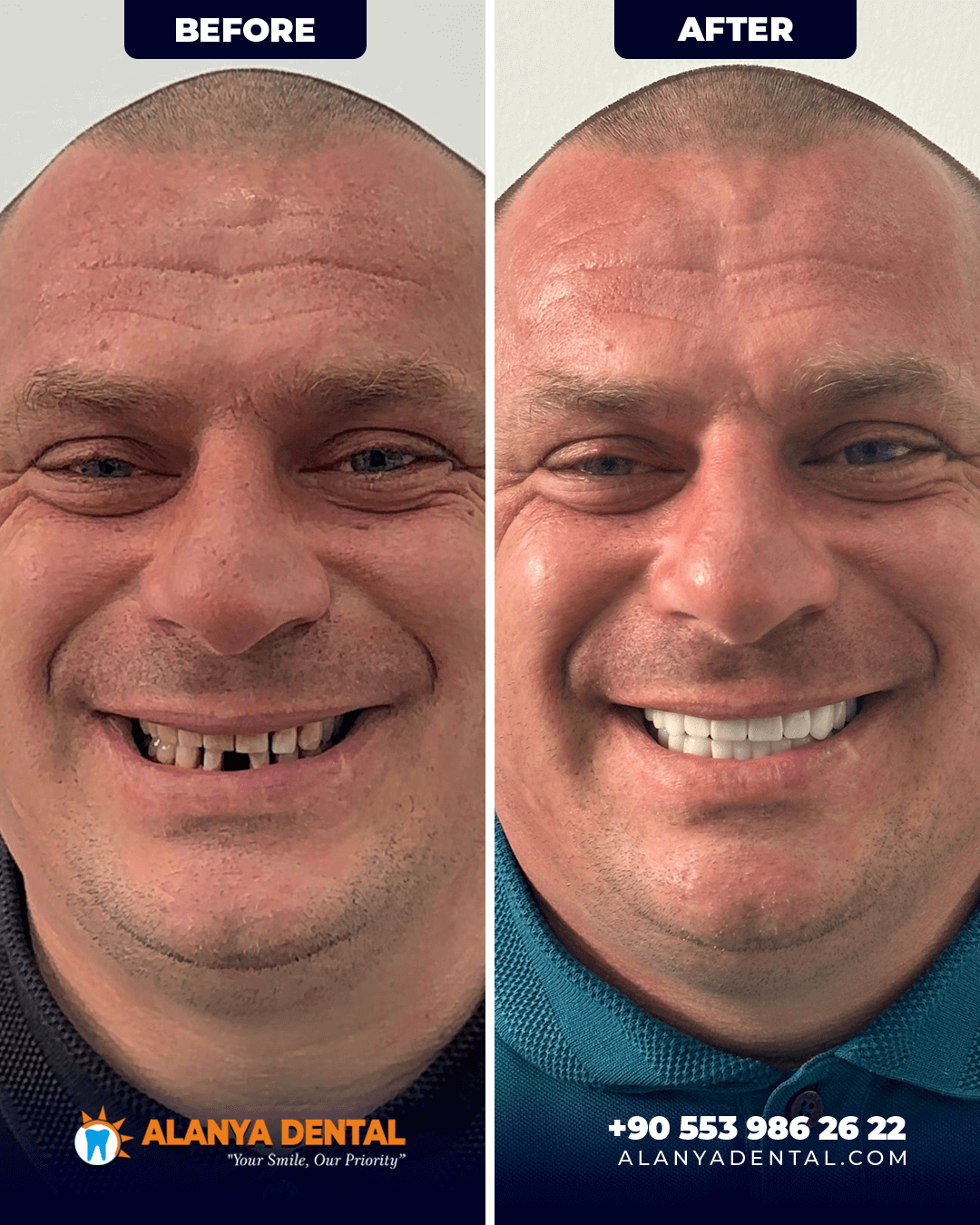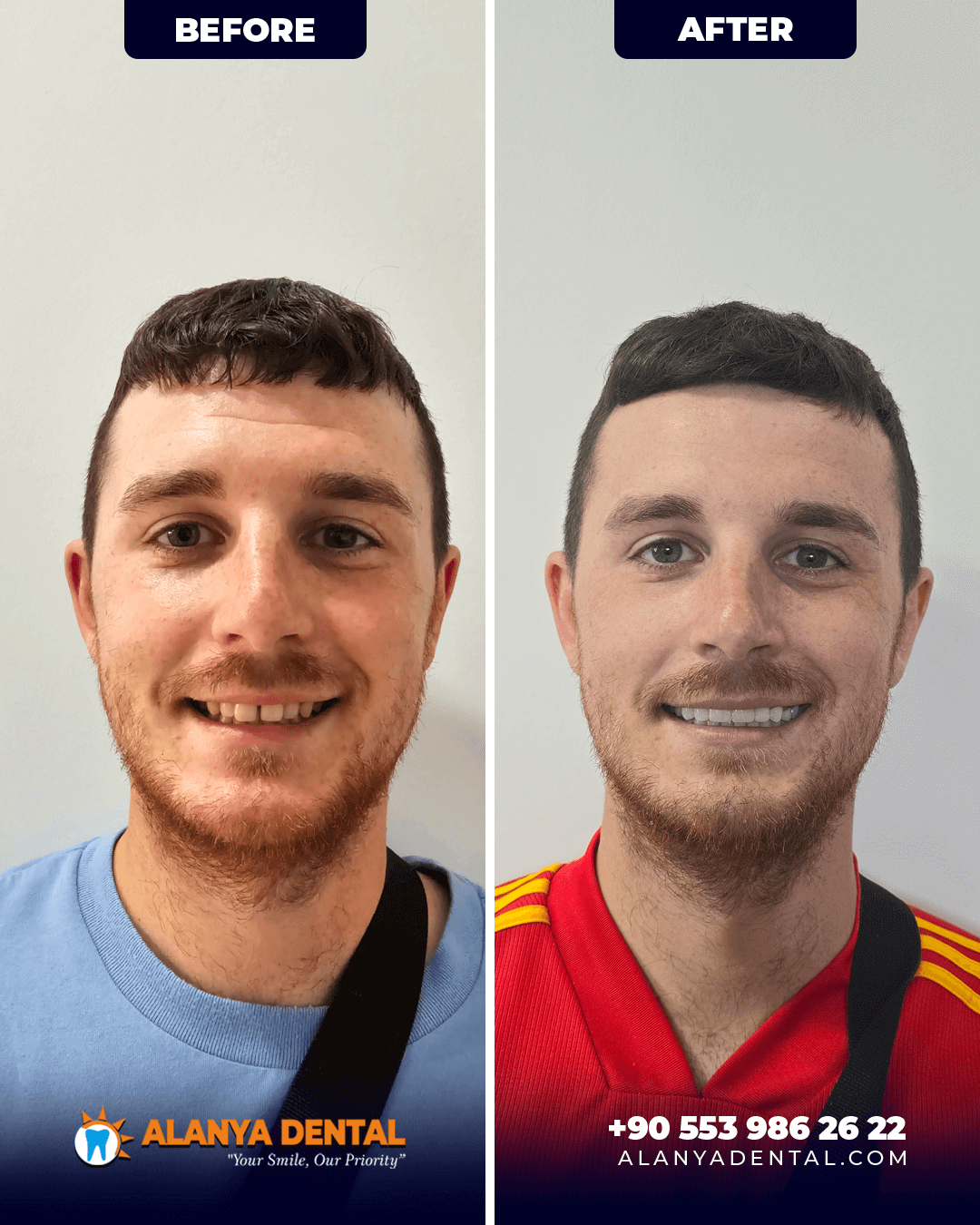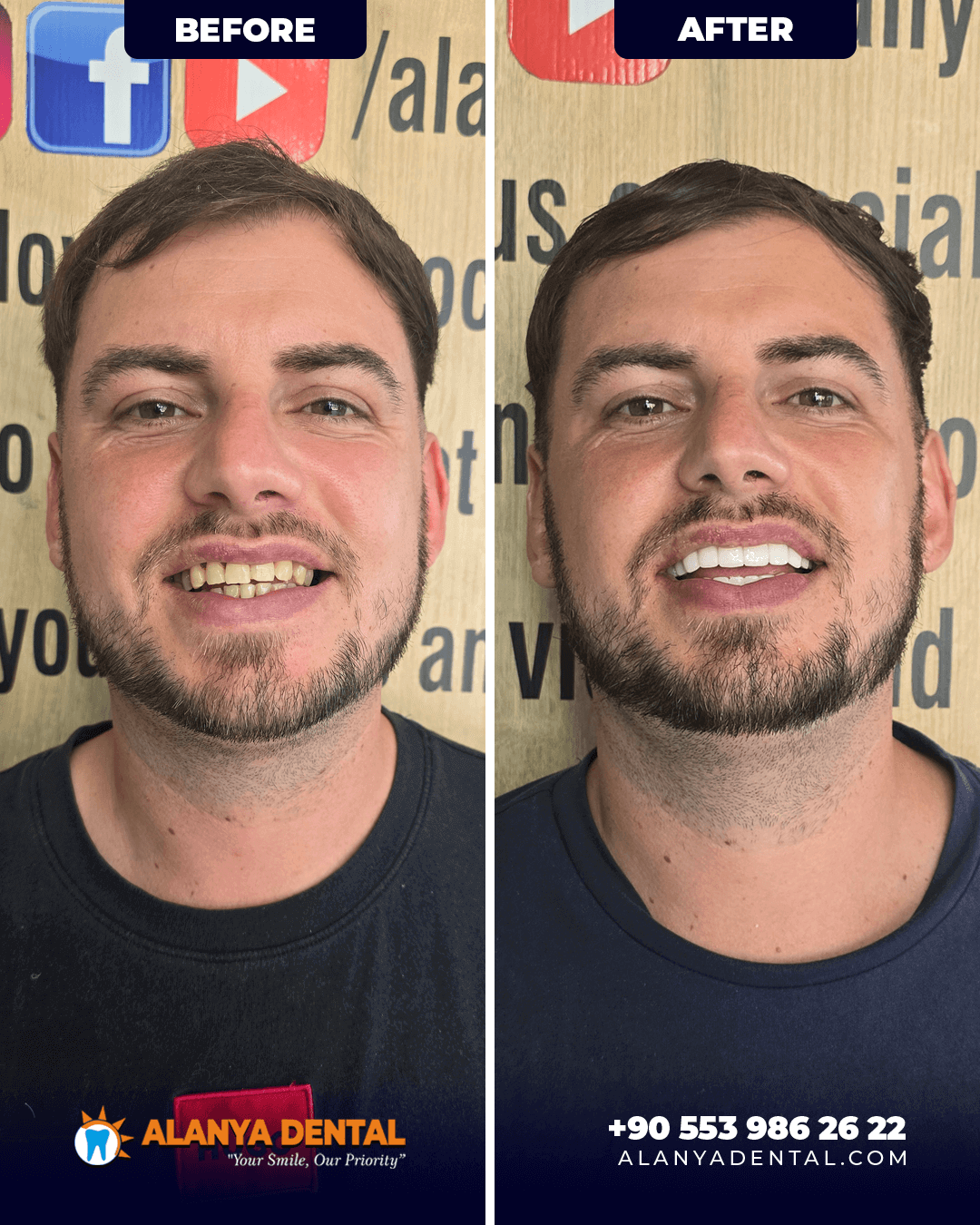Inlays and Onlays in Turkey

Inlays and Onlays in Turkey
Inlays and onlays are methods that focus on preserving natural tooth structure. Inlays are designed to clean and fill moderate to small cavities on the chewing surface of the tooth. Onlays, on the other hand, cover a larger area, including the protrusions of the tooth called cusps. Both methods are custom-made in a laboratory and then fixed to the tooth.
During the preparation phase, any decay or old fillings are removed from the tooth, and then an impression is taken. A custom restoration is fabricated from the resulting model. High-precision instruments are used during this process to ensure a perfect fit. This preserves the tooth's natural appearance and restores chewing function.
Inlays and onlays have the potential to last longer than fillings. This is because they fit the tooth better and are made of more durable materials. Furthermore, they can be applied without unnecessarily reducing the tooth structure, making them a preventative treatment option.


Materials Used for Inlays and Onlays
The materials used in inlay and onlay production directly impact the success of the treatment. These materials offer superior properties in terms of both aesthetics and durability. The most commonly used materials include ceramic, composite, resin, and gold. Ceramic is notable for its ability to mimic natural tooth color and its resistance to staining.
Composite resins, on the other hand, have a more flexible structure. They are considered an ideal option for small to medium-sized repairs. They can be produced in shades close to the tooth's color and can be easily adjusted within the mouth if necessary. Gold, on the other hand, has been known for its durability throughout history.
Differences Between Inlays and Onlays
While inlays and onlays were developed for similar purposes, they differ in their scope. Inlays are designed to repair pits or cracks on the chewing surface of a tooth. This method does not cover the protrusions of the tooth, called cusps. Onlays, on the other hand, provide a more extensive coverage that includes these protrusions. Therefore, onlays are preferred in cases where the tooth has sustained more extensive damage.
Inlays are generally used for small to medium-sized cavities or fractures. Onlays are preferred for larger surface repairs and when the structural integrity of the tooth is compromised. Both methods are prepared in a laboratory setting, where impressions are taken, and then fixed to the tooth. After application, the resulting appearance is consistent with the natural tooth color.

How Are Inlays and Onlays Applied?
The first stage involves a detailed clinical examination. The tooth's current condition is examined, and the root structure and surrounding tissues are assessed using X-ray images. Decayed or damaged tissue is carefully removed without damaging the healthy enamel. Special dental burs are used during this process. Once the cleaning is complete, the tooth is prepared for impressions.
Impressions are taken using precision molds or digital scanners. This information is sent to the laboratory, where a restoration is fabricated from materials such as porcelain, composite, or gold. The tooth is protected with a temporary filling during the laboratory period. Once the restoration is complete, a fitting is performed. Color match, form, and fit are assessed.
Vorteile von Inlays und Onlays
Choosing the right method for dental restoration is the foundation for long-term satisfaction. Inlays and onlays hold a significant place in dentistry, both for their aesthetics and durability. Here are some of the key advantages of inlays and onlays:
- Maximum protection of healthy tooth tissue
- Ability to match natural tooth color
- High chewing resistance
- Long-lasting use
- Smooth surface to resist plaque accumulation
The advantages listed above offer significant benefits for patients throughout the treatment process. Preserving healthy dental tissue reduces the risk of needing larger restorations in the future. Thanks to the color match, the procedure becomes indistinguishable from natural teeth.


Inlay and Onlay Prices in Turkey
The cost of dental treatment depends on many factors, including the materials used, the application technique, and the laboratory process. Prices for inlay and onlay restorations are determined by combining all of these factors. The type of material used can affect the duration of treatment and the detail of the workmanship.
Porcelain inlays and onlays stand out with their natural appearance and durability. Composite materials, on the other hand, can be prepared more quickly and can be advantageous in some cases. Alanya Dental Clinic uses a patient-focused approach to determine the most appropriate treatment plan, ensuring high satisfaction in both aesthetic and functional aspects.
How Long Does Inlay and Onlay Treatment Take?
Treatment duration depends on the extent of the procedure and the current condition of the tooth. Inlay and onlay restorations require a laboratory phase, so they cannot be completed in a single appointment. During the first appointment, the tooth is examined, any damaged tissue is cleaned, and impressions are taken. This phase is generally short.
The fabrication process begins once the impressions arrive at the laboratory. Depending on the material used, this timeframe can range from a few days to a week. For porcelain restorations, additional color matching may be necessary. Once fabrication is complete, a fitting of the restoration takes place at the second appointment.
During the try-in, the fit, color match, and integrity of the tooth are checked. If the fit is perfect, the bonding phase begins. The inlay or onlay is secured to the tooth with special adhesives and polished to a smooth finish. This process is usually completed quickly.

How Long Do Inlays and Onlays Last?
Inlays and onlays are reliable options for those seeking long-lasting dental solutions. These methods protect the tooth's healthy structure while also offering the advantage of long-term use. Their durability is directly related to the quality of the materials used, the application technique, and the individual's oral hygiene habits. With proper care and regular checkups, these restorations can maintain their function for years.
Inlays and onlays are typically made from durable materials such as porcelain, composite resin, or gold. Porcelain options offer high wear resistance and maintain their shape for extended periods. Gold is known for its flexibility and resistance to fracture. Composite resin, on the other hand, provides a more natural appearance and, with proper care, provides a satisfactory lifespan.


What Are Inlays and Onlays?
Repairing damaged areas while preserving the natural form of the tooth is a primary goal in modern dentistry. Inlays and onlays are two specialized restorative treatment methods developed to achieve this goal. While inlays repair only a specific area of the chewing surface of the tooth, onlays cover a broader surface and can extend all the way to the cusps. This provides a preventative solution that doesn't require tooth extraction or a full crown. Alanya Dental Clinic offers personalized solutions in this field, leveraging technological equipment and expertise.
FAQ's
Frequently Asked Questions
Those who want to maintain their oral health and extend the life of their treatment should pay attention to certain points after inlay and onlay applications. One of the most important factors determining the quality and longevity of a treatment is the post-treatment care process. Here are some important points to consider:
- Avoiding crushing hard foods directly with your teeth
- Maintaining regular brushing and flossing habits
- Controlling habits such as clenching and grinding your teeth
- Limiting your intake of sugary and acidic beverages
- Maintaining regular dental checkups
Each of these items contributes to a healthy post-treatment process. Crushing hard foods puts unnecessary pressure on the restoration and increases the risk of cracking. Regular oral hygiene prevents plaque and tartar buildup and maintains gum health.
When teeth have moderate decay or structural loss, traditional fillings may not always provide ideal results. In such cases, inlays and onlays are the preferred treatment options. These methods allow the tooth to preserve both its function and its natural structure.
Tooth decay is usually treated with a filling. However, if the decay is extensive or if the existing filling needs to be replaced, an inlay or onlay may be recommended. These methods may also be used for broken or cracked teeth, when a strong framework is needed to protect the remaining tooth.
Teeth weakened after root canal treatment are supported by onlays, protecting them from the risk of fracture during chewing. Furthermore, in cases where amalgam fillings are not aesthetically pleasing, porcelain or composite inlays and onlays can provide a more natural appearance.
In today's dentistry, appearance is as important as function. Inlays and onlays are manufactured with special materials that mimic natural tooth color and form, ensuring a highly aesthetically pleasing match. Porcelain options, in particular, reflect light in a way similar to natural tooth enamel, creating an unnoticeably natural appearance.

Book Your Free Consultation Today!
Free Consultation

Healthy Teeth, Happy Smile!
Healthy teeth are the foundation of a confident and radiant smile — because when your teeth are healthy, every smile shines brighter and makes you feel happier inside and out.
Why Booking a Dental Appointment at Alanya Dental Clinic is Essential for Your Oral Health
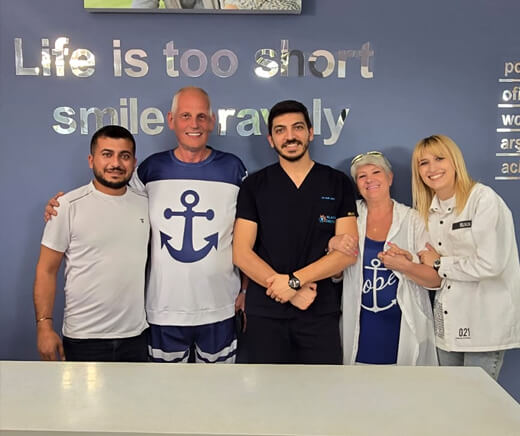

 TR
TR DE
DE Teeth Cleaning
Teeth Cleaning 


